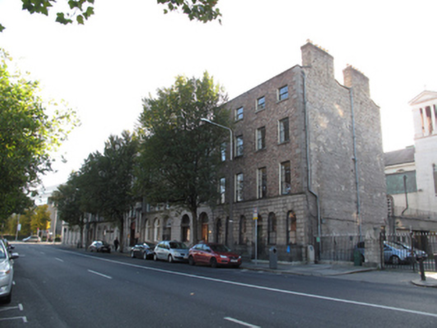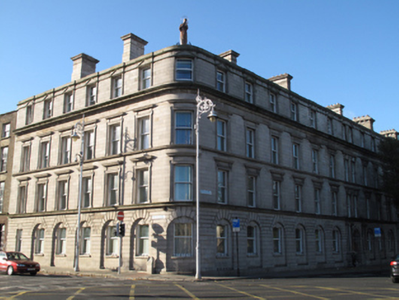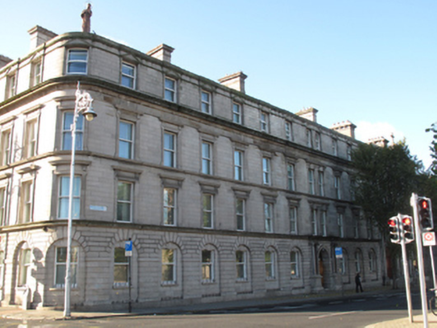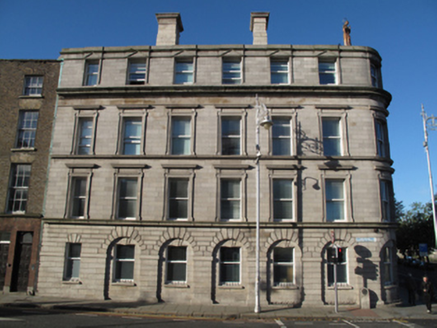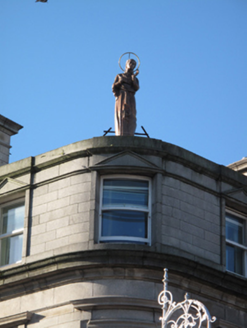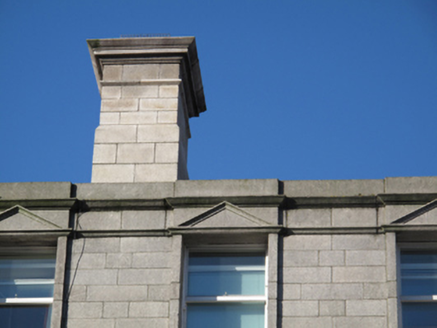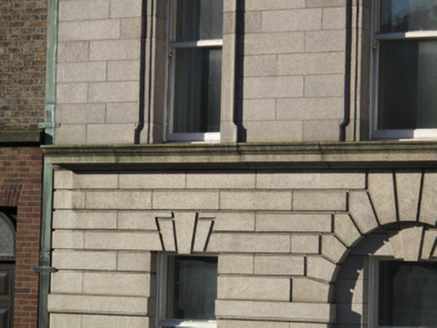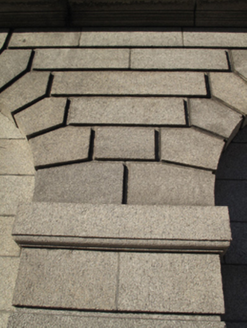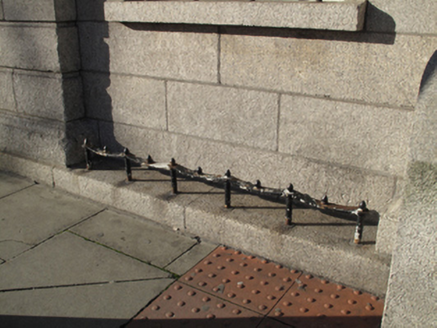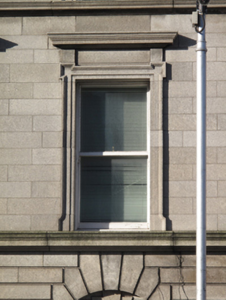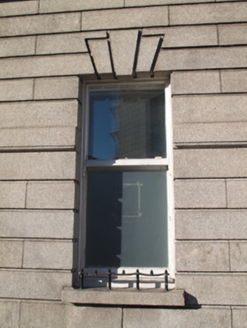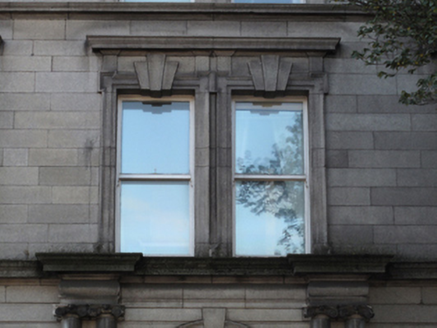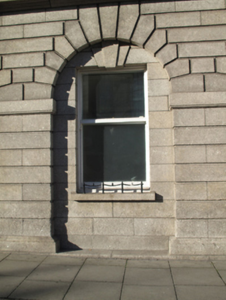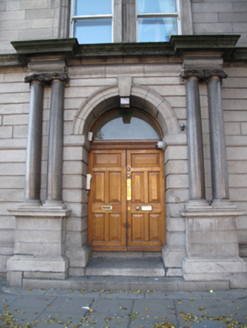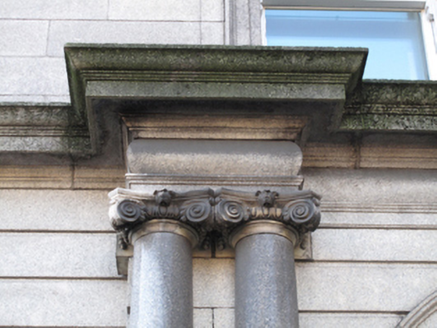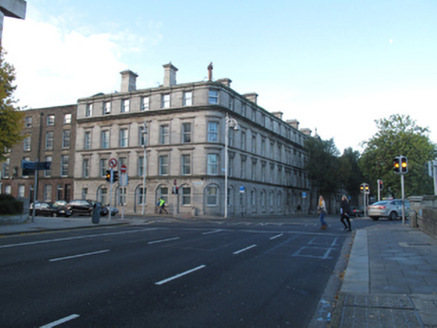Survey Data
Reg No
50080504
Rating
Regional
Categories of Special Interest
Architectural, Artistic, Social
Original Use
Friary
In Use As
Friary
Date
1910 - 1950
Coordinates
315105, 234099
Date Recorded
28/10/2013
Date Updated
--/--/--
Description
Corner-sited four-storey friary, built c.1930, having ten-bay front (north) elevation, and six-bays east elevation, rounded corner bay. Roof hidden behind raised granite parapet, copper rainwater goods and cut granite chimneystacks. Bronze statue to roof over corner bay. Cut granite walls, channelled to ground floor, with granite plinth course. Carved granite cornices forming continuous sill courses to first, second and third floors. Square-headed window openings having one-over-one pane timber sash windows. Cut granite architraves and pediments over windows to third floor. Carved granite lugged architrave and cornice over windows to first and second floors. Windows over doorway to front (north) elevation paired, with stepped keystones below cornice. Windows to ground floor set within round-headed arcade having rusticated voussoirs, stepped keystones over, granite sills with cast-iron railings, and granite impost course. Door to front flanked by paired polished granite engaged Ionic columns. Round-headed door opening having carved granite architrave and keystone, double-leaf timber panelled door with plain fanlight opening onto granite steps.
Appraisal
This imposing building forms part of a group of buildings with the adjoining church and Franciscan repository. It occupies a prominent site at the junction between Winetavern Street, Wood Quay and Merchants Quay and this, coupled with its considerable form and scale, makes it a formidable presence on the streetscape. The regular fenestration arrangement and continuous sill courses create a well-balanced façade, with a subtle contrast provided by the arcade and channelled granite to the ground floor. While the Franciscans have had a presence on Merchants' Quay since medieval times, the corner site, formerly occupied by a commercial building, was developed by them in the early twentieth century with a building in the classical revival style popular at the time.
